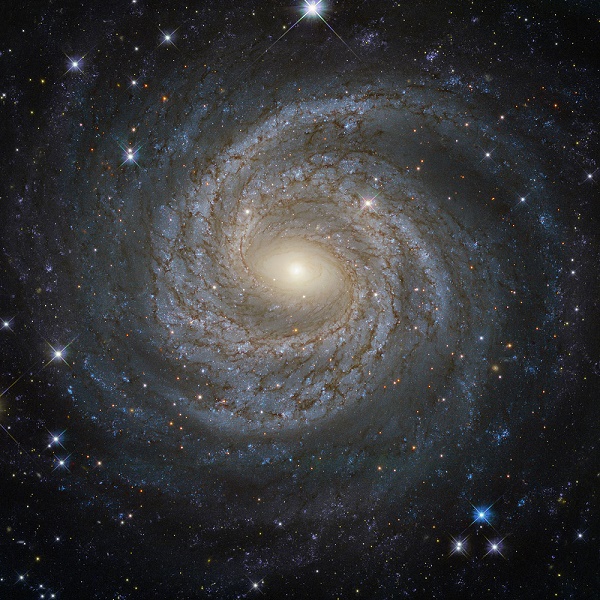Hubble Captures Perfect Snowflake Galaxy
| Ana Verayo | | May 16, 2016 07:00 AM EDT |
(Photo : ESA/Hubble & NASA ) This spiral snowflake galaxy hosts a supermassive black hole inside.
A new stunning image taken by the NASA and European Space Agency's Hubble Space Telescope reveals the majestic spiral galaxy known as NGC 6814, that has been captured in the most detailed shot yet, directly revealing unprecedented features of the galaxy.
Like Us on Facebook
This new image of the spiral galaxy NGC 6814 was processed by scientists from NASA's Goddard Space Flight Center.
Most galaxies found in the known universe are composed of spiral and irregular shaped ones, about 60 percent of them. Beyond the Milky Way galaxy, these types of galaxies can be seen expanding 500 million light years across, surrounding our galaxy, however, despite similar shapes, each one is unique like a snowflake.
This active galaxy possesses a very bright nucleus, described with an intense amount of luminosity. NGC 6814 also emits a massive amount of electromagnetic radiation, where astronomers classify it as a Seyfert galaxy, which is the second biggest group of active galaxies apart from quasars.
The core of this galaxy is not only very luminous but this light is apparently caused by excessive blasts of intense and powerful X-rays across the universe. Now, astronomers believe that a supermassive black hole lies in the core of NGC 6814, estimated to possess 18 million solar masses or 18 times more massive than our own sun, that has been the original source for these X-ray bursts across the cosmos.
Apart from this highly intense and bright core, the galaxy's spiral arms are filled with extended filaments of ionized gas and dust, glowing outwards. The galaxy's body is filled with bluish orbs and blobs, suggesting that these were once evidence of young, hot stars that are spread out across the far reaches of the galaxy, indicating a rapid and intense star formation process.
Tagshubble, Hubble Space Telescope, galaxies, snowflake galaxy, NASA, ESA
©2015 Chinatopix All rights reserved. Do not reproduce without permission
EDITOR'S PICKS
-

Did the Trump administration just announce plans for a trade war with ‘hostile’ China and Russia?
-

US Senate passes Taiwan travel bill slammed by China
-

As Yan Sihong’s family grieves, here are other Chinese students who went missing abroad. Some have never been found
-

Beijing blasts Western critics who ‘smear China’ with the term sharp power
-

China Envoy Seeks to Defuse Tensions With U.S. as a Trade War Brews
-

Singapore's Deputy PM Provides Bitcoin Vote of Confidence Amid China's Blanket Bans
-

China warns investors over risks in overseas virtual currency trading
-

Chinese government most trustworthy: survey
-

Kashima Antlers On Course For Back-To-Back Titles
MOST POPULAR
LATEST NEWS
Zhou Yongkang: China's Former Security Chief Sentenced to Life in Prison

China's former Chief of the Ministry of Public Security, Zhou Yongkang, has been given a life sentence after he was found guilty of abusing his office, bribery and deliberately ... Full Article
TRENDING STORY

China Pork Prices Expected to Stabilize As The Supplies Recover

Elephone P9000 Smartphone is now on Sale on Amazon India

There's a Big Chance Cliffhangers Won't Still Be Resolved When Grey's Anatomy Season 13 Returns

Supreme Court Ruled on Samsung vs Apple Dispute for Patent Infringement

Microsoft Surface Pro 5 Rumors and Release Date: What is the Latest?










